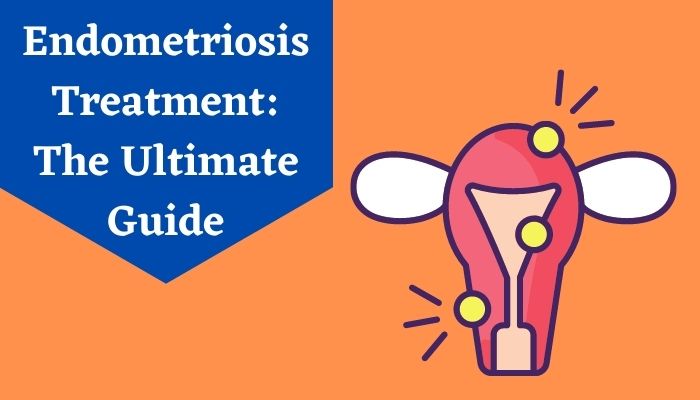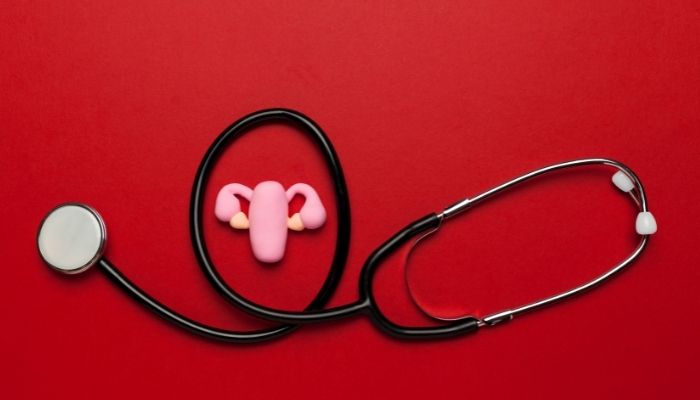Endometriosis is a healthcare condition that occurs only in females. In this condition, the tissue that has similarities with endometrial tissue may grow outside the uterus. Endometrial tissue primarily grows on your ovaries, bowel, and tissues lining your pelvis. In a very rare condition, this may spread beyond your pelvic region. Endometrial tissue that grows outside your uterus is called an endometrial implant.
The hormonal changes during your menstruation cycle are responsible for this growth. Gradually, the tissue will grow, become thicker and then break down. Over time, the tissue that has broken down but not extirpated from your body got stuck in your pelvis. Though this tissue is not cancerous, it can cause scarring and adhesions. This tissue even blocks your fallopian tubes and cysts may form due to confined blood.
Symptoms of Endometriosis
The symptoms and signs of endometriosis are not the same for all. Some women may experience mild symptoms, but some may have to bear moderate to severe symptoms. Initially, you may experience mild pain, but gradually it will aggravate as the disease will grow. Some women may not also experience any symptoms.Pelvic pain is the most common symptom of endometriosis. Other symptoms that you may experience are
- Painful menstrual cycle
- Cramps 1 or 2 weeks around menstruation
- Heavy menstruation bleeding or bleeding between periods
- Infertility
- Painful intercourse
- Discomfort with bowel movements
- Lower back pain, particularly during your menstrual cycle
Uncommon Symptoms of Endometriosis
Some less common symptoms are,- Changes in urination
- Changes in bowel movements (either constipation or diarrhea)
- Abnormal uterine bleeding
- Back pain
Treatment for Endometriosis
Endometriosis has no permanent cure, but you can manage the symptoms. Medications and surgical options will lessen your symptoms and manage complications. Your doctor will first recommend medications and then will go for surgery if your condition doesn’t change.Common Treatment Options of Endometriosis
1. Pain Medications
You may purchase over-the-counter pain medications such as ibuprofen to lessen your pain. But talk to your doctor once before purchasing the medication.2. Hormone Therapy
You may take hormonal supplements to reduce pain and avert the progression of endometriosis. Hormone therapy will help your body to regulate the monthly hormonal changes.3. Hormonal Contraceptives
Hormonal contraceptives reduce fertility by averting the monthly growth and buildup of endometrial tissue. Birth control pills, patches, and vaginal rings are effective in reducing the pain associated with less severe endometriosis.The medroxyprogesterone (Depo-Provera) injection is also effective in stopping the menstruation cycle. This injection inhibits the growth of endometrial implants. It also reduces the pain and other symptoms. But this option can’t be your first choice as there is a chance of weight gain, decreased bone production, and depression in some cases.
4. Gonadotropin-Releasing Hormone (GnRH) Agonists and Antagonists
Women are often prescribed gonadotropin-releasing hormone (GnRH) agonists and antagonists to inhibit the production of estrogen that stimulates the ovaries. An example of a GnRH agonist is Lupron Depot (an injectable) and Elegalix is an antagonist that needs to be taken orally. Both can overpower estrogen production. Blocking the production of estrogen stops menstruation and produces artificial menopause.GnRH therapy comes up with some side effects like vaginal dryness and hot flashes. If you take small doses of estrogen and progesterone at the same time, then this may prevent these symptoms.
5. Danazol
This is another imperative medication that stops menstruation and minimizes the symptoms of endometriosis. While taking danazol, the disease may continue to grow. Danazol also has side effects, including acne and hirsutism. Hirsutism is a condition where excess hair appears on your face and body.6. Conservative Surgery
Conservative surgery is recommended for women who want to get pregnant or who experience extreme pain. This surgery is preferred when other hormonal treatments fail to improve your condition. The prime objective of this surgery is to remove or destroy endometrial growths without hurting the reproductive organs.Laparoscopy is a minimally invasive surgery that is used to diagnose endometriosis. This surgery also extirpates irregular or displaced endometrial tissue. By making a small incision in your abdomen, a deft surgeon usually removes the growths or burns the tissues. Lasers are now commonly used to kill this “out of place” tissue.
7. Last-Resort Surgery (Hysterectomy)
If your conditions don’t improve with other treatments, then your doctor may recommend a total hysterectomy as the last possibility.Under this kind of surgery, a surgeon utterly removes the uterus and cervix. Sometimes, the ovaries are needed to remove as they make estrogen. Estrogen may stimulate the growth of endometrial tissue. Moreover, the surgeon removes visible implant lesions.
Based on the condition of the patient, two other types of hysterectomies are performed.
- A subtotal (also referred to as partial or supracervical) hysterectomy: this type of hysterectomy eliminates the upper part of the uterus without impacting the cervix.
- A radical hysterectomy: This type of surgery is performed when cancer is present. It eliminates the entire uterus, cervix, and the top part of the vagina.
The Bottom Line
Though a hysterectomy is effective in treating endometriosis, this is not a cure. You can’t get pregnant after a hysterectomy. Before opting for surgery, consult your doctor for other options.Endometriosis is a chronic condition, but it has no cure at present. Treatment methods like medications, hormone therapy, and surgery will help you in managing the symptoms and complications like pain and fertility issues, and so on.
If you think you have endometriosis, consult a doctor for the proper and accurate treatment to combat the condition.



